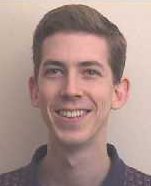Modelling the details of a chemical reaction has always been a computational nightmare. Once the chemist considers interacting molecules with more than a handful of atoms, the complexity of the equations needed to describe the bonds that hold the atoms together and how they change during a reaction become far too much for even a supercomputer to portray accurately within a reasonable time.
Nobel-prize winning theories have over the years allowed chemists to develop simplifications that allow even proteins with their hundreds of atoms to be modelled to a high degree of accuracy in a matter of days rather than decades. But, even these simplifications don’t allow reactions to be modelled readily. Chemists would like to be able to simulate every atom and every bond and how they react with precision and rapidity. They may now have taken a step closer to this Holy Grail through ongoing work by Daniel Crawford and colleagues at Virginia Tech and Bethel College of St. Paul in Minnesota. There are many chemical reactions that you don’t want to do in the lab, explains Crawford, Perhaps they are too slow or too toxic or too explosive, or there may be micro- or nano-scopic components of reactions you can’t probe experimentally.

Daniel Crawford
Quantum chemistry can unlock the secrets of reactions involving small molecules, such as ozone and a chlorofluorocarbon in atmospheric chemistry, say. But, consider the reaction of a steroidal hormone with an enzyme, or a pheromone with a vomeronasal receptor and the number of atoms involved is simply too high for even the most sophisticated of quantum chemistry computer programs to simulate.
The problem is that even simple-seeming molecules, such as the amino acids that comprise those protein receptors and enzymes, take days to compute. Consider two amino acids and the calculation time expands from days to years. Far too long for even the most patient PhD student!

Rollin King
Crawford and Bethel College’s Rollin King are now applying a technique called local correlation. The basic idea is to describe the electronic interactions in a molecule piece by piece. You shouldn’t have to consider interactions of electrons on parts of the molecule that are far apart, in general, so by breaking the molecule into fragments, we can reduce the cost (time) of the calculation, explains Crawford.
To take advantage of this local correlation approach, Crawford explains that he and his colleagues have had to completely reorganize their quantum chemistry computers programs. In some sense we have to start from scratch, he told Spotlight. We build the electronic wave functions using a set of localized orbitals rather than the usual so-called canonical orbitals, which are smeared across the entire molecular framework.
In this new, more focused set of orbitals, many pieces of the wave function (such as those corresponding to electronic interactions on distant atoms) become negligible. By reorganizing the programs to determine in advance which pieces are small, we can avoid computing and storing them from the beginning, he adds.
One of the most important target applications the team is shooting for is the simulation of optical activity in chiral, or handed, molecules. Many natural products and bioorganic compounds, including drugs, are chiral and in one handed form are safe and effective while in the other can be less effective or even dangerous.
Our goal is the development of a computational technique that will help organic chemists identify the absolute configuration – that is, the handedness — of a newly isolated chiral compound so that it can be synthesized in the laboratory, says Crawford. Such a development could potentially save months or even years of laboratory work. The problem, though, is that natural products are large, at least by quantum chemical standards, explains Crawford, To compute the optical activity, we have to be able to deal with systems containing 30-50 non-hydrogen atoms. This is where the local correlation idea comes in.
The researchers presented their results at the 223rd national meeting of the American Chemical Society, in Florida in April 2002.
Further reading
Daniel Crawford
http://www.chem.vt.edu/people/faculty/crawford-daniel/
Suggested searches
Quantum chemistry
Chemistry modelling
Wavefunctions
Molecular orbitals
Chirality